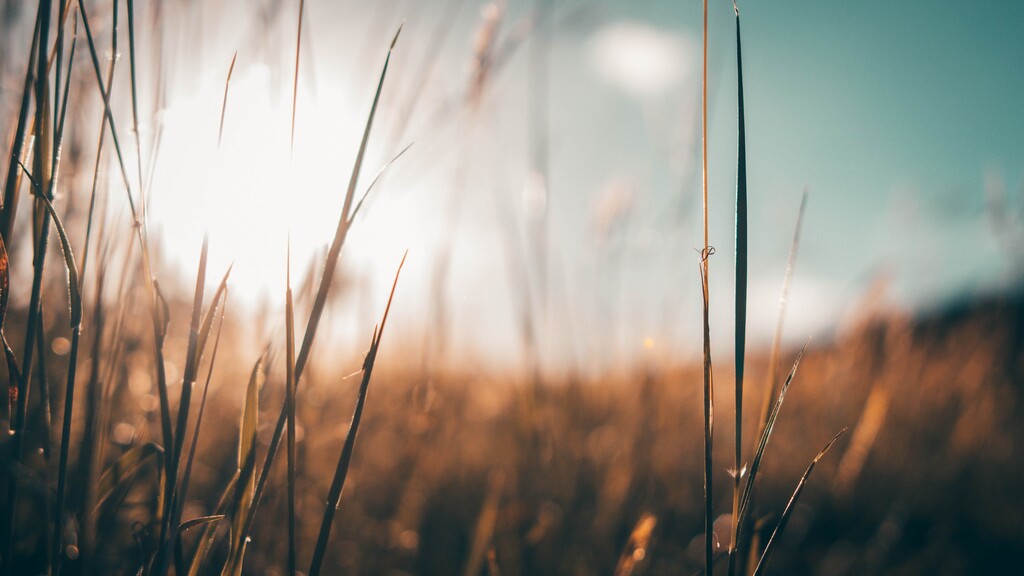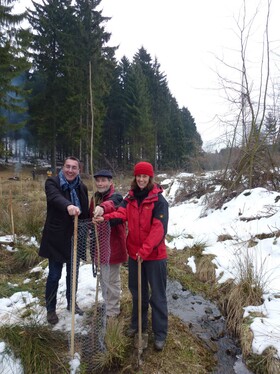

Climate change causes relocations of animals and plants to areas more suitable to them. However, in Europe these adjustment movements are often exacerbated by streets and settlements. Courses of brooks and rivers are natural passages for the migration of species. Naturefund and EURid aim to reforest trees alongside the courses of brooks and rivers in Europe. In a first partial step, parts of the Wirftbach has been renaturalised.

Start: November 2012
End: April 2013
Northern Rhineland-Palatinate in the Eifel near the city of Adenau and the Nürburgring
Starting from the source area, about 100 trees, mainly ash and black alder, can be planted over 3 km along the stream
Partner in this project is the BUND Ahrweiler. The areas to the right and left of the Wirftbach are owned by the Nürburgring GmbH, the municipality of Nürburg and a church. The areas are not used, except for the adjacent commercial forest.
Due to the good biological quality of the water, typical species such as larvae of the stone and caddisfly, shrimps and fish species such as the bullhead and minnow are found in this low mountain stream.

Climate change causes a change in eco systems. Like in previous periods, animals and plants will try to relocate into habitats which are more suitable to them. However, in Europe these adjustment movements are often exacerbated by streets and settlements. Courses of brooks and rivers still constitute natural passages for the migration of species. Though, many waterways are only marginally close to being natural.
Furthermore, floodplains and lowland forests alongside the waterways only exist in small numbers, even though two thirds of all european species occur in floodplain forests. If it could be managed to rebuild floodplain forests alongside the courses of brooks and rivers, european climate passages could be brought forward. This would ease the species' territorial acclimatisation to the climate change and, at the same time, contain the loss of biodiversity in Europe.
Naturefund and EURid aim to reforest trees alongside the courses of brooks and rivers in Europe. The development of european climate passages alongside waterways is a higher-ranking idea that can be well communicated transnationally.
In a first partial step, two courses of brooks in the Eifel, Germany, are to be renaturalised, and further reforestations alongside waterways will follow.
Northern Rhineland-Palatinate in the Eifel close to the city of Adenau and Nürburgring;
Originating at the wellspring area, about 200 and more trees, mainly ash and black alder can be planted alongside the course of brook at a length of 3 kilometres.
Due to the good biological water quality (II and III), typical species like the masks of stoneflies and caddis flies, the common amphipoda and fishes like bullhead and minnow occur in this highland brook.
At this section of the brook there are spruces on both sides that have already been thinned out in the last years and will be further chopped down by the forestry office of Adenau. Spruce is not a typical species of tree that grows naturally along the courses of brooks. In parts, typical species of trees like black alder and willow have grown again on their own. Although, a further reforestation of certain species of trees would be useful and necessary.
Our partner in this project is the BUND district group of Ahrweiler. The areas on the right and on the left side of the course of the brook are owned by the Nürburgring GmbH, the community of Nürburg and a church. Except for the bordering forest, so far these areas are not used.
Plantations alongside the brook edges are possible and will be arranged with the owners.
The BUND district group of Ahrweiler has only been active here since autumn 2011. In the last months, it has mainly removed smaller and alien groves, abolish dams and, by doing so, rehabilitated the natural brook bed. A reforestation on the left and the right side would be useful.
The BUND would implement the reforestation and take care of the trees in the long term.
Here as well, the trees are habitats for numerous species, serve as erosion protection and provide shade in summer to stabilise the oxygen content of the waters.
Sorry, there is no comment for this project yet. Write the first one!